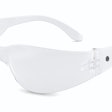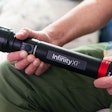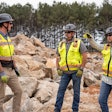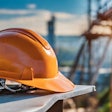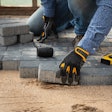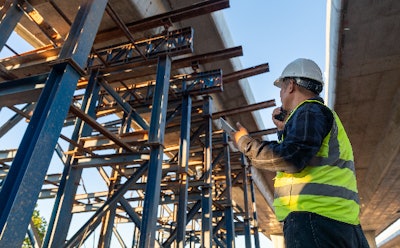
Of the many reasons why construction workers should wear hard hats, protection from electrical hazards is a key factor. In its November 2022 bulletin, the Center for Construction Research and Training notes the construction sector has a disproportionately high number of fatal electrical injuries compared to other U.S. industries, accounting for 49 percent of all fatal and 24 percent of non-fatal electrical injuries from 2011 to 2020.
Specialty trade contractors accounted for 71 percent of fatal electrical injuries and OSHA electrical citations in construction.
Electrical Hazards on Construction Sites
Exposures to voltage greater than 220 volts accounted for a majority of both direct (65 percent) and indirect (87 percent) fatal injuries. Electrocution is identified by the Occupational Safety and Health Administration (OSHA) as one of the ‘Construction Focus Four’ hazards, including falls, struck-by and caught in-between incidents.
Electrical hazards may come from improper grounding, exposed electrical parts, inadequate wiring, damaged insulation, overloaded circuits, damaged tools and equipment, wet conditions and overhead power lines.
The U.S. Centers for Disease Control and Prevention notes safe work practices such as using caution near energized lines, de-energizing equipment before inspection and repair, properly maintaining tools and equipment and using appropriate PPE are all important.
OSHA standard 29 CFR 1910.135 states ‘employees working in areas where there is a possible danger of head injury from impact, or from falling or flying objects, or from electrical shock and burns, shall be protected by protective helmets.’ OSHA requires helmets comply with ANSI/ISEA Z89.1-2014 (R2019) – American National Standard for Industrial Head Protection.
Hard Hat Classifications
According to the University of Iowa Environmental Health & Safety, the three classes of hard hats are based on the level of protection provided from electrical hazards.
- Class E: Helmets for use where electrical hazards are present (in utility services) that are non-conducting and intended to protect against falling objects and reduce the danger of exposure to high voltage electrical shocks and burns. Offers the highest protection with high-voltage shock and burn protection up to 20,000 volts.
- Class G: General Use (limited voltage - non-conducting) intended to protect against falling objects and reduce the danger of exposure to low voltage electrical conductors. They provide impact and penetration resistance and protection from up to 2,200 volts.
- Class C Hard Hats are designed for lightweight comfort and impact protection but are not tested for electrical resistance nor do they provide protection from electrical conductors.
Hard hat classes are paired with types. Type I helmets are designed to reduce the force resulting from a blow to the top of the head from tools, small parts, or similar items falling from a reasonable height or from making contact with an obstruction just over the head.
Type II helmets are designed to reduce the force resulting from a blow to either the top or sides of the head such as could be experienced when working around moving equipment or materials with horizontal blow threats. The University of Iowa’s Environmental Health and Safety notes the suspension system inside the hat is designed to help absorb and dissipate impact while keeping a clearance between the hat’s head and shell.
Hard Hat Designs and Features
Hard hats feature front-brim and full-brim designs. In the Type 1, Class E category, a general purpose non-vented front-brim hard hat is used by construction workers and road crews. The front brim protects the face from sun, reduces glare and helps shed rain.
A general purpose non-vented full-brim hard is designed to protect the face and neck from sun, reduce glare and help shed rain. They are used by those working in direct sunlight. Work-at-height climbing helmets feature a chinstrap keeping the helmet in place if a fall or impact occurs and enclose the back and sides of the head for extra protection.
In the Type 2, Class E category, side- and top-protecting front-brim hard hats are designed to reduce glare and help shade the eyes and face in bright sunlight. Type 2 provides protection against vertical and angled impacts up to 60 degrees. They have more padding than Type 1 hard hats and should be worn when swinging objects are a concern.
Work-at-height climbing helmets Type 2, Class E have the same features as the Type 1 with the additional protections provided by Type 2 and Class E.




